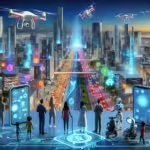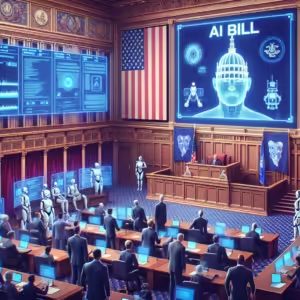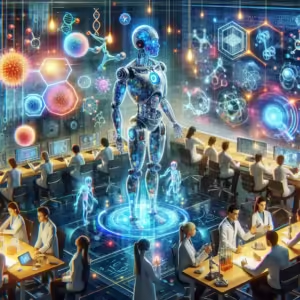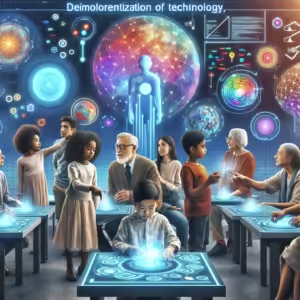The Role of Artificial Intelligence in Revolutionizing Safety Measures
In recent years, artificial intelligence (AI) has swiftly become a cornerstone of technological advancement, and its applications are being embraced across various industries. As we step into 2025, the integration of AI into safety innovations is not only transforming how we protect lives and assets but also setting new standards for efficiency and effectiveness. This article delves into how AI-driven solutions are enhancing safety measures and why they are crucial for the future.
AI-Powered Surveillance Systems
An essential domain where AI is making strides is in surveillance systems. Today’s AI technologies have evolved from mere motion detection to advanced pattern recognition and anomaly detection.
– **Smart CCTV Cameras**: AI-enabled cameras can identify unusual activities, such as trespassing or abnormal behavior, by learning from normal patterns. They provide real-time alerts to security personnel, significantly reducing response times.
– **Facial Recognition**: This technology is widely used in public spaces to identify individuals and potential threats. By cross-referencing faces with criminal databases, security forces can act preemptively.
AI-powered surveillance not only enhances safety but also optimizes resource allocation by allowing security personnel to focus on incidents rather than endless monitoring.
Immediate Benefits
The shift towards AI-powered surveillance systems offers immediate, tangible benefits:
Autonomous Transportation and Vehicular Safety
As autonomous vehicles (AVs) edge closer to becoming mainstream, AI plays a critical role in ensuring their safety and reliability. AI algorithms manage everything from navigation to real-time decision-making, which is crucial in avoiding accidents.
– **Predictive Maintenance**: AI systems can predict maintenance needs before they become critical, thus preventing breakdowns or accidents related to vehicular failure.
– **Collision Avoidance Systems**: By using AI-powered sensors and cameras, AVs can detect obstacles and predict collisions, activating brakes or steering adjustments to prevent accidents.
– **Traffic Management**: AI integrated into traffic systems can help in managing congestion, thus reducing the likelihood of accidents in high-traffic areas.
Long-Term Impact of AI in Transportation
The long-term integration of AI in transportation is expected to:
AI in Healthcare Safety
In the healthcare industry, AI-driven solutions are crucial in ensuring patient safety. These technologies aid in both diagnosis and treatment, mitigating risks associated with human error.
– **Diagnostic Accuracy**: AI systems can analyze medical images with high precision, reducing misdiagnosis rates and helping doctors make better-informed decisions.
– **Remote Monitoring**: Wearable devices equipped with AI sensors provide real-time health monitoring, alerting medical professionals to anomalies that require immediate intervention.
– **Medication Safety**: AI tools can optimize medication administration processes, minimizing dosage errors and ensuring better compliance with treatment protocols.
Enhancing Patient Outcomes
The incorporation of AI in healthcare settings promises to vastly improve patient outcomes by:
Industrial Safety and AI-Driven Automation
The integration of AI in industrial sectors is pivotal for enhancing workplace safety and operational efficiency. AI-driven automation systems reduce human involvement in hazardous tasks, thereby minimizing the risk of accidents.
– **Predictive Safety Analytics**: AI systems can analyze historical workplace data to predict potential hazards, enabling companies to implement preventive measures.
– **Robotics for Dangerous Tasks**: AI-driven robots can be employed to handle tasks in high-risk environments, such as chemical plants and heavy machinery operations.
– **Real-Time Monitoring**: Industrial AI solutions can track workforce health and environmental conditions, alerting managers to situations that require immediate attention.
Sustainable Safety Advancements
By embracing AI in industrial safety, companies can achieve:
The Future of AI in Safety Innovations
The trajectory of AI in safety innovations is set to accelerate as technology advances and more robust data becomes available. Future developments will likely include:
– **Enhanced Machine Learning Algorithms**: These will better analyze complex scenarios, thereby improving risk assessment and management.
– **AI-Powered Emergency Response Systems**: Speeding up responses through real-time data analysis and situation prediction.
– **Personalized Safety Solutions**: Tailored safety mechanisms for individual needs, potentially using AI to predict personal risks based on lifestyle or professional environment.
Conclusion
As AI continues to evolve, its impact on global safety measures is profound and far-reaching. By automating processes, eliminating human error, and enabling real-time decision-making, AI is setting a new paradigm for safety innovations in 2025 and beyond. As the technology matures, the seamless integration of AI into everyday safety measures will not only enhance protection but also pave the way for a future where safety is proactive rather than reactive. The continued exploration and adoption of AI-driven solutions ensure that we remain on the cusp of cutting-edge safety technologies, poised to tackle the challenges of tomorrow.








